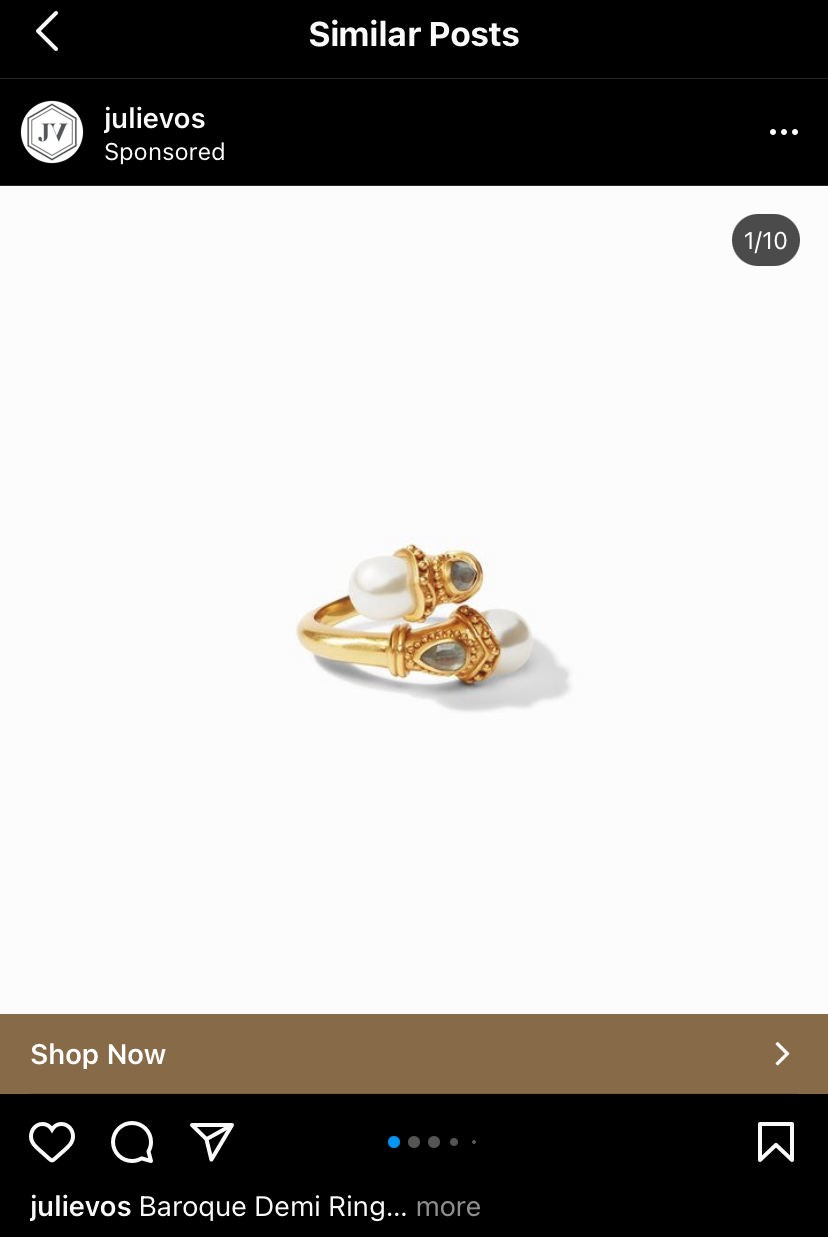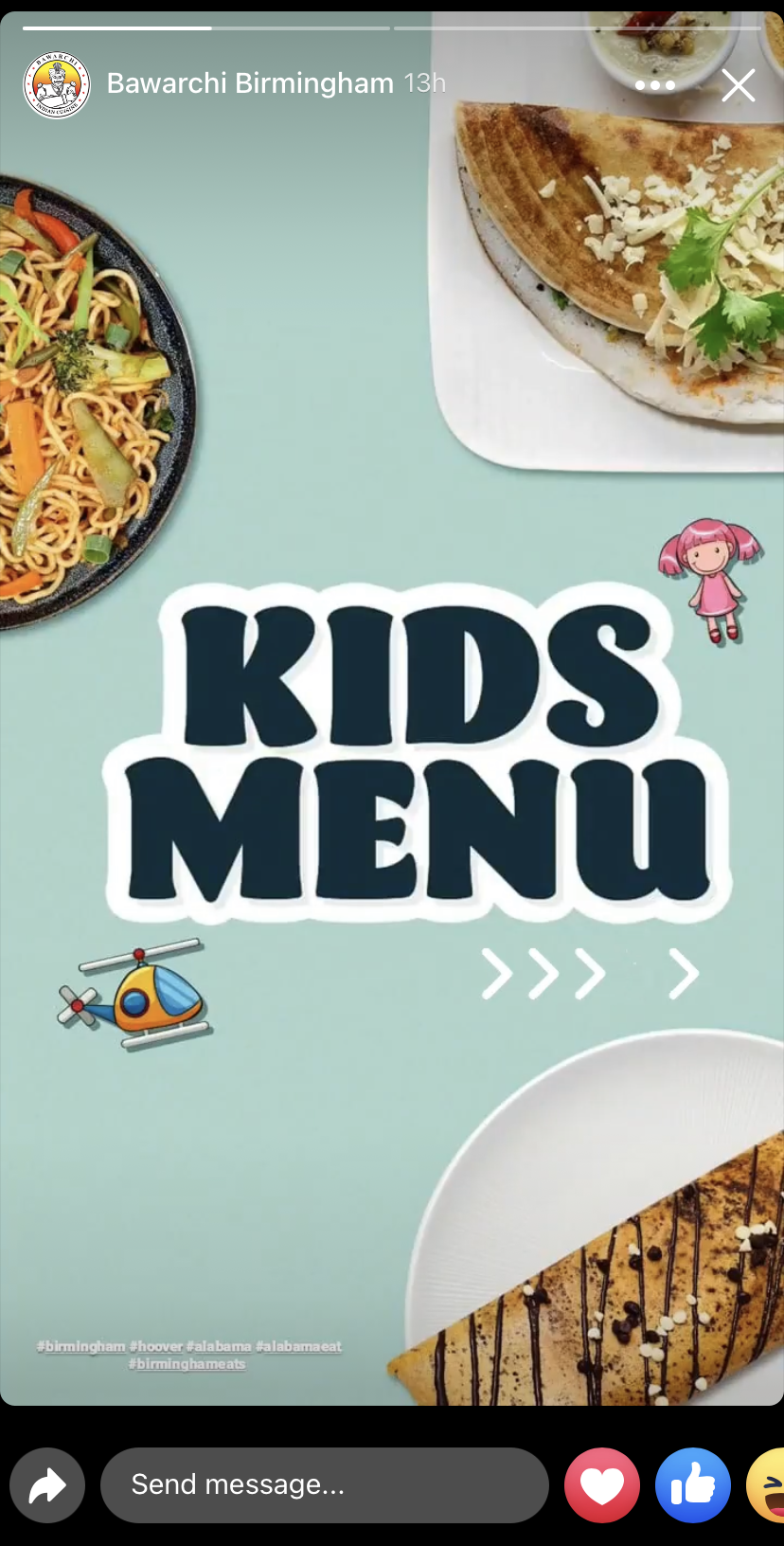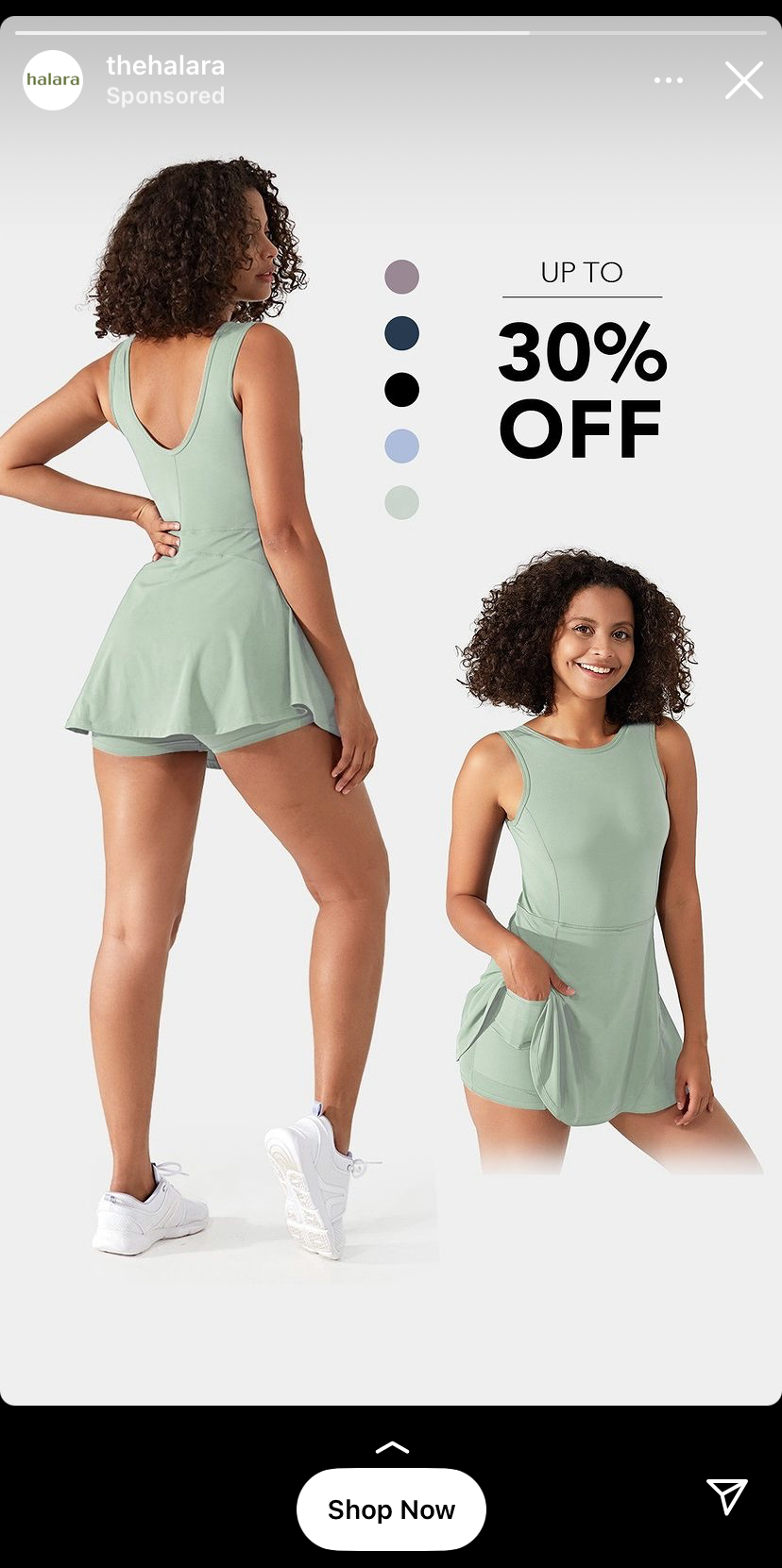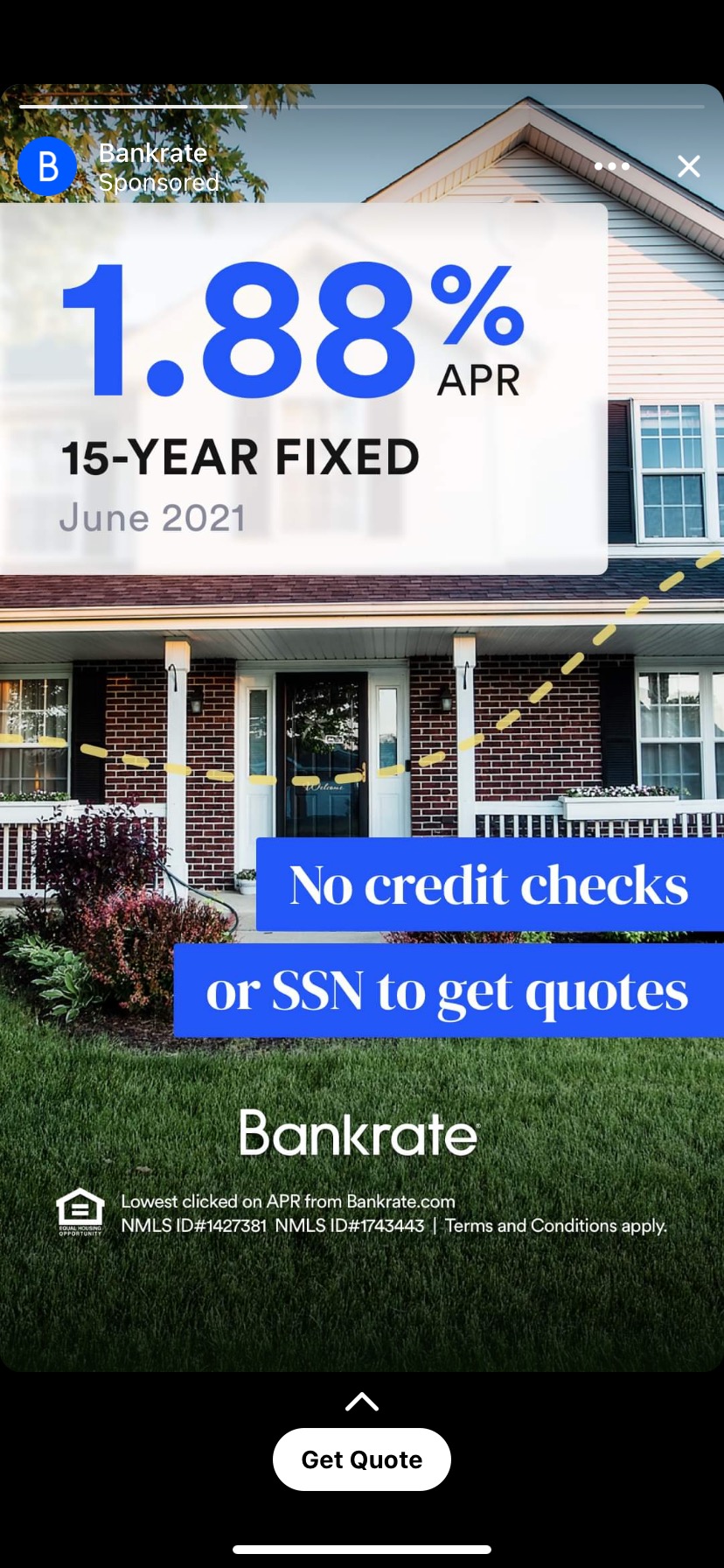While Facebook does offer automatic placements, manually selecting Facebook ad placement options can be a good way to narrow down your targeting and get the most out of your ad spend.
In this post, we’re going through the pros and cons of all the Facebook ad placements, as well as how to choose the right one.
Let’s get started!
What is a Facebook ad placement? And why does it matter?
If you advertise on Facebook, you’re no stranger to the platform’s several ad settings and options. Facebook advertisers can customize their ads at every step of the setup process, from choosing the ad’s goal all the way to deciding where the ad will be shown.
On Facebook, ad placements are the different places where your ad can be displayed. There are 15+ total ad placements across the following platforms: Facebook, Instagram, Audience Network, and Messenger.
You choose your placements at the ad set level of your campaign. Your campaign objective will dictate which ad placements you can use.
Ad placements are grouped based on how users experience them. Here are the different placement categories:
- Feeds
- Stories
- In-Stream
- Search
- Messages
- In-Article
- Apps
The right Facebook ad placements can help you target specific segments of your audience. By studying which ad placements yield the best results (and which don’t) for your campaign types, you can optimize your ad spend and put your money where it counts.
For example, you might find that Audience Network clicks seem accidental and lead to a high bounce rate. For better results, you can deselect the Audience Network altogether moving forward.
Can you control your Facebook ad placement?
Yes, you can control your Facebook ad placement. Facebook gives you the option to choose placements for your ads. Here’s how to do it:
- Go to Ads Manager
- Choose your objective and click Continue. Your ad placement options will differ based on the objective you choose.
- Next, go to the Placements section. Automatic Placements will be selected by default. To choose your own placements, select Manual Placements, then check which placements you want to include and uncheck the ones you want to exclude. To limit your placements to Mobile or Desktop, select the right option in the Devices dropdown menu.
Every type of Facebook ad placement you need to know
Feeds
Facebook News Feed
Facebook News Feed ads appear in the desktop feed and/or the mobile feed. You have the option to dictate whether your ads go to desktop, mobile or both.
Pros: Feed ads have a higher click-through rate and lower cost-per-conversion than right column ads, and they’re better for enticing people who are not yet familiar with your brand or company.
Cons: Desktop users tend to follow through with conversions more often than mobile users, but the cost per conversion (CPCs) tends to be lower for mobile News Feed ads than desktop ads.
Here’s an example of a Facebook News Feed ad in action. Imperfect Foods shows off various product bundles in a carousel on the News Feed, including a special offer in their post copy.
Instagram Feed
Instagram feed posts are mobile-only ads that appear as standard Instagram posts to people browsing their feeds.
Pros: Instagram feed ads provide a non-intrusive way to reach your target audience because the ads look like normal Instagram posts. They show up in feeds of targeted audience segments and include a customizable CTA button. These placements also provide the best results in terms of cost, ROI and engagement — brands’ average engagement rates are 10X higher on Instagram than on Facebook.
Cons: Instagram’s feed offers fewer advanced ad features than Facebook.
Facebook Video Feeds
With this placement, your video ads appear between organic videos on Facebook Watch and Facebook News Feed.
Pros: Video is a great format for showing off your product. When you place your video between organic videos, you’re showing it to users who are already in the mood to watch videos and probably have their sound on.
Cons: Lower viewership rates than in-stream videos.
Facebook Marketplace
Marketplace ads show up when users browse Marketplace or view the Marketplace home page.
Pros: This placement targets users with purchase intent rather than those who just have a general interest in a product or service. Marketplace placements are more affordable than Google ads, which can be used for the same purpose. Most marketplace products are bought and sold locally, so this is an ideal ad placement for local services and brick-and-mortar businesses.
Cons: Facebook Marketplace doesn’t yield as many interested users as more established rivals like Amazon and eBay, which means fewer impressions.
This is what ads look like in the Facebook Marketplace placement:
Facebook Right Column
Right Column ads are displayed in the column on the right side of the screen to Facebook users browsing on their computers.
Pros: When used in tandem with News Feed ads, Right Column ads get up to three times more engagement. If you aren’t looking to convert people who come into contact with your brand for the first time, Right Column ads can be a cost-effective method of reaching an audience and can be used for retargeting purposes.
Cons: As a result of the platform’s design changes, people see fewer Right Column ads than News Feed ads. The Right Column ad placements sizes are smaller, they don’t stand out as much, and they don’t include CTA buttons. Additionally, Right Column ads are more expensive than News Feed ads. In general, Right Column ads convert at lower rates.
This is what Right Column ads look like in action:
Instagram Explore
When someone clicks on a post on the Instagram Explore page, they’re shown similar posts. When you select this placement for your ad, it will be shown as one of these similar posts.
Pros: More than 50% of Instagram accounts use Explore to discover brands every month.
Cons: You can only select this placement along with the Instagram Feed placement.
Here’s an example of an Instagram Explore ad placement:
Messenger Inbox
When a user clicks the ad in their inbox, they see a detailed view with a designated CTA button within Messenger.
Pros: Messenger Inbox ads look like messages. You can target them toward users who have existing conversations with and are already interested in your brand. They also give you the ability to send promotional messages anytime, even beyond the usual 24-hour window after a user has engaged with your chatbot.
Messenger Inbox ad placements look like this:
Stories
Facebook Stories
This option places your ads in between people’s Stories on Facebook.
Pros: This placement results in high early engagement rates and is an excellent way to boost brand awareness.
Cons: Videos must be less than 15 seconds.
Here’s an example of a Facebook Stories placement used to show off a restaurant’s kid’s menu:
Instagram Stories
The Instagram Stories ad placement pops up between user Stories.
Pros: Stories are an especially effective way to retarget people who have already liked you on Facebook, taking advantage of their existing interest with highly relevant messaging and multiple options for CTA buttons.
Cons: CPCs tend to be higher for Instagram Stories than other placements, while CTRs trend lower.
Here’s how these full screen, vertical ads look in action:
Messenger Stories
This full-screen vertical ad appears in between people’s Messenger stories.
Pros: This placement offers an immersive format with the option to add creative elements. Messenger plays videos that are 15 seconds or less for their full duration.
Cons: Not available as a standalone placement. To use this placement, you have to select Instagram Stories or Facebook Feed too.
Ads using the Messenger Stories placement appear like this:
Facebook In-Stream Videos
Facebook In-stream video ads appear in Video on Demand and a select group of approved partner livestreams. These ads are mobile-only and run within or between regular videos.
Pros: Over 70% of these placements are viewed to completion. The platform also says in-stream videos have 10% more incremental reach than mobile News Feed alone. They also offer a lower cost per impression and are best (though at a slightly higher budget) for enticing people who haven’t yet heard of your brand.
Cons: Generally low conversion rates and small inventory compared with other placements.
Here’s what in-stream videos look like in action:
Facebook Search Results
This placement puts your ad next to relevant Facebook search results, including those in Marketplace.
Pros: These ads can be videos, photos, collections, or carousels. Because they show up on Facebook search results and Marketplace pages, they’re visible to users who already have some interest in what you’re advertising.
Cons: This placement is only available on the Facebook mobile app. It’s also not an independent placement– you have to run a Facebook News Feed ad to use this one.
To see this ad placement in action, we searched the term “shoes” and got this JustFab ad in our results:
Facebook Instant Articles
These placements appear within Instant Articles in the Facebook mobile app.
Pros: Instant Articles are presented in a large, mobile-only format (essentially an entire web page) featuring fast-loading articles with images and video. These placements display directly in mobile News Feeds, allowing content to be shown without taking users to an external website or app. They’re also less expensive than other placements. Ads displayed in Instant Articles load 10 times faster than regular web ads, giving marketers the opportunity to earn more from impressions and clicks. They also allow media like YouTube videos, tweets, and images to be embedded while providing an immersive full-screen experience that gives users the option of engaging with likes, comments, and other emotions allowed with standard Facebook posts.
Cons: Conversion rates are lower than other placements.
Here’s an example of this ad placement in action:
Apps
Audience Network Native, Banner, and Interstitial
Native, banner and interstitial ads are mobile-only standard placement ads that run on sites outside Facebook’s platform.
Pros: These ads give you the ability to seriously amplify your reach beyond Facebook, allowing your brand to connect with audiences through ads with premium publishers on mobile apps, websites, Instant Articles, and videos. These placements offer a low cost per click (CPC), cost per lead (CPL), and cost per thousand impressions (CPM) relative to other placements. They also help you reach up to 16% more people than on Facebook or Instagram alone.
Cons: Conversion rates are lower due to driving unqualified traffic, which leads to higher CPAs.
Audience Network Rewarded Videos
This placement shows your ads as videos users watch in exchange for a reward in an app.
Pros: The reward incentivizes viewers. These videos have the best in-game ad format with high completion rates. They’re also considered non-intrusive because they are opt-in only.
Cons: These ads typically yield lower user engagement, low-quality traffic, and lower lifetime value.
This is how they can look in-app:
Wrapping up on Facebook ad placements
When it comes to Facebook ad optimization, a lot of moving parts go into making ads effective. These include targeting, copy, visuals, and placement.
Because Facebook offers automatic targeting, Facebook ad placements are often skipped in the ad setup process. But while automatic placements work well, not choosing your own Facebook placements is passing on an opportunity for better targeting.
Now that you know the ins and outs of Facebook ads placements, you can take advantage by optimizing your Facebook ad placements to get the most out of your ad spend.













Thanks animalz for sharing this handy guide which has answered questions related to the Facebook ad placement. We all know that how Social media marketing is important and with the arrival of management tools like Hootsuite, it has become convenient for us to manage channels, grow and engage faster than ever.
I think more than 70-80% of social media marketing is done on Facebook and rest from other channels and the main part is Facebook ad placement which you explained it nicely.
Before running an ad we also need to ensure that the business profile is properly set and showing what your business is doing would be the best bet for successful ad campaigns. This can also help in increasing brand awareness, loyalty, and generating qualified leads. Thanks again for sharing this post and educating people on this topic.
Amelia
I liked this informative article on Facebook ad placements.
What’s the best placement if you’re trying to attract webinar attendees?
Your best posts have you explained things in your post very well
Better placement means better conversions, definitely something that social media marketers need to look into.